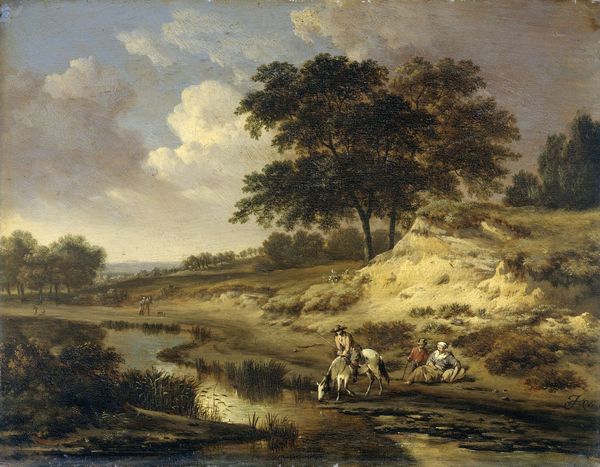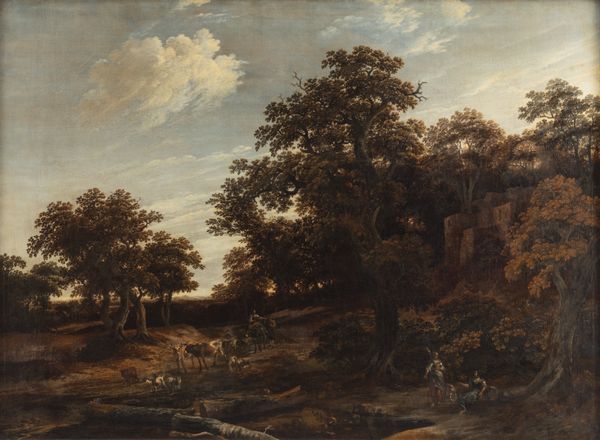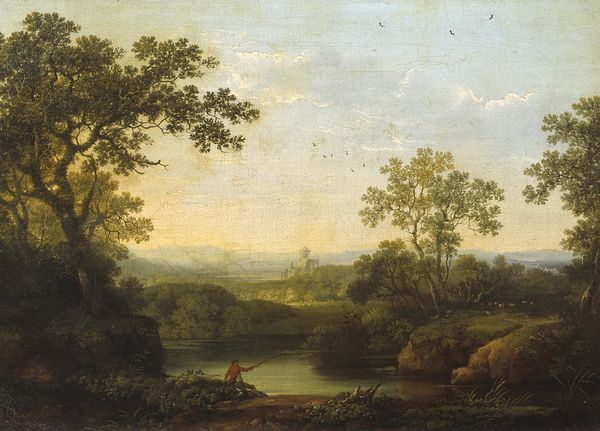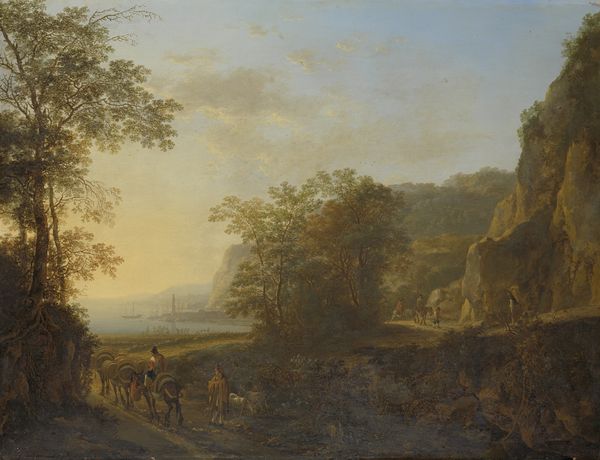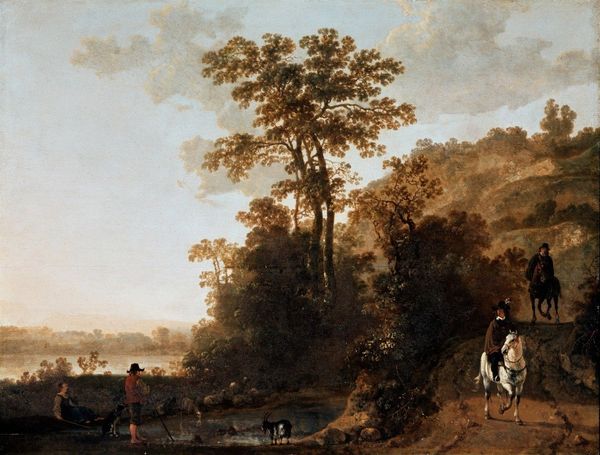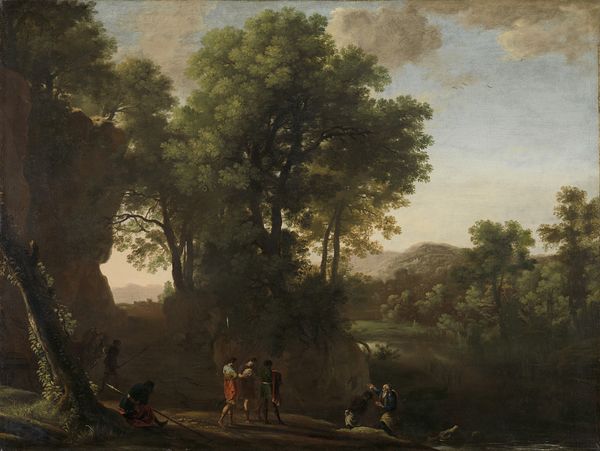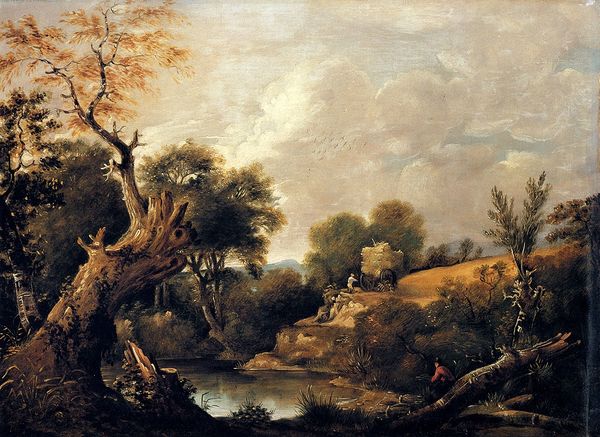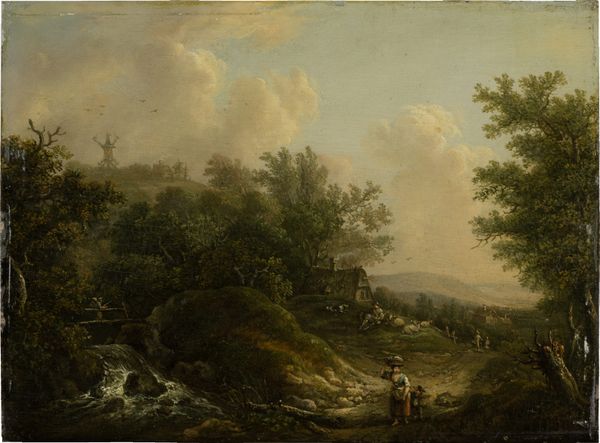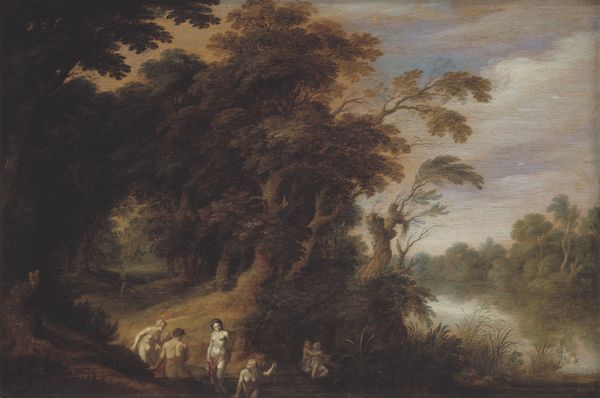
painting, oil-paint
#
baroque
#
dutch-golden-age
#
painting
#
oil-paint
#
landscape
#
genre-painting
Copyright: Public domain
Editor: "Banks of a Brook" painted by Jan Dirksz Both around 1645 using oil on canvas, presents a serene scene. It feels almost staged. How would you interpret its depiction of nature within the socio-political context of the Dutch Golden Age? Curator: That’s a perceptive reading. During that era, landscapes weren't just about pretty views; they often conveyed a sense of national identity and prosperity. Think of it as a visual argument: this land is ordered, productive, and beautiful, reflecting well on those who govern it. Do you notice anything about who populates the land? Editor: I see figures, some seemingly peasants with animals, suggesting a working landscape… perhaps prosperity does trickle down, at least visually? Curator: Precisely. These genre-like scenes subtly legitimize the social hierarchy. The placement of figures within the landscape naturalizes existing power structures, implying harmony between people and the land under a benevolent ruling class. It almost romanticizes labour and ownership, don’t you think? Editor: Definitely. The composition itself directs your eye, almost guiding you through the different activities, almost like the artist is managing my experience. I initially overlooked that subtext, thinking just pastoral imagery. Curator: Both was certainly aware of the socio-political implications of portraying the Dutch countryside. His work, though beautiful, can be read as a sophisticated endorsement of the era's social values. Editor: I see it now. The staged feeling isn’t a bug; it’s a feature! Thanks; that really reshapes my perspective. Curator: Absolutely. It reminds us that even seemingly idyllic scenes are products of their time and contain implicit social messages.
Comments
No comments
Be the first to comment and join the conversation on the ultimate creative platform.
